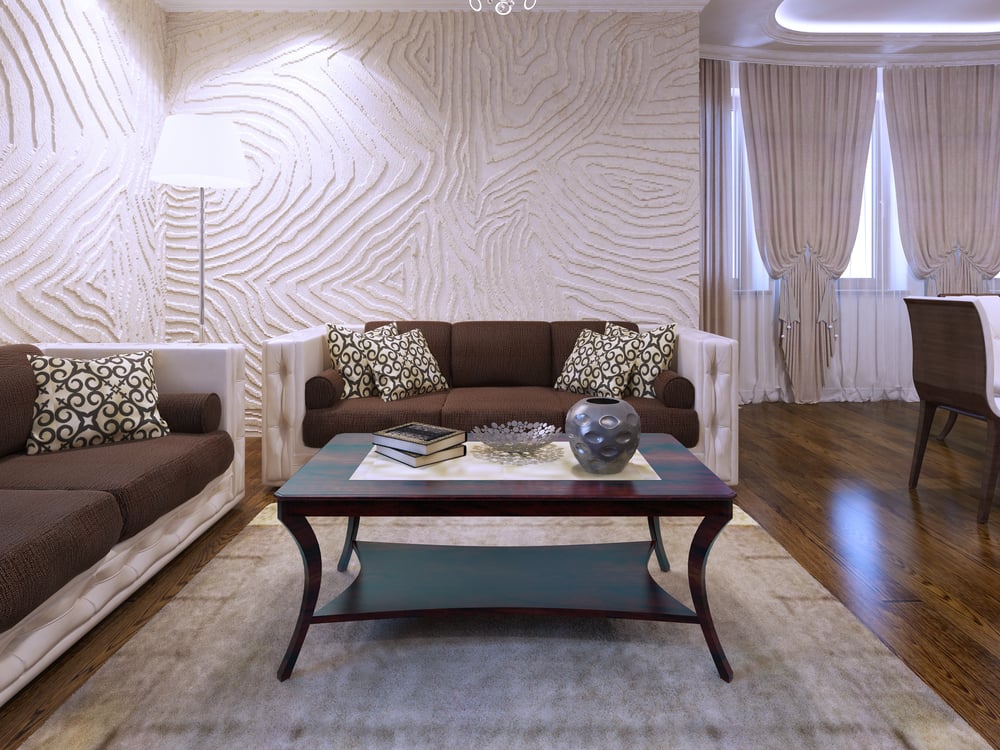
Wall Texture Paints
If your interior walls are less than perfect, textured paint could be the solution. It’s often used to conceal damage in areas where it’s not possible to re-plaster or drywall.
Textured paint can also be used to achieve a wide variety of paint finishes and can even mimic other materials, from plaster to concrete, turning a bland flat surface into something that offers instant impact the moment you enter the room. There are glitter paints for a sparkly bedroom, metallic emulsions for an industrial look and suede finishes for a velvety feel. Color-wise, palettes range from dark, dramatic tones to reflective paint sheen levels and bold, vibrant shades.
What is texture finish paint?
Texture finish paints are materials available in paste or powdered forms. They are made up of naturally occurring materials like clay, sand, lime, and many more. The composition and chemistry of textured paints help to achieve rough, smooth, semi-polished to glossy surfaces based on the nature of texture paint.
Which is better wallpaper or texture paint?
Textured paint is better than wallpaper since textured wall surfaces offer washability and stain resistance. Unlike wallpapers, texture paint designs can be continued on curved walls giving a seamless finished look. These textured wall finishes speak luxury and classy taste in their outlook. wall texture patterns offer uniqueness to showcase in the social circle, unlike wallpapers.
Textured Paint Finishes
According to Daubert, there are a few finishes you may see with textured paints.
Smooth texture: Uses thicker paint without any aggregates. Applied with a putty knife to look like plaster.
Sand texture: Uses sand as an aggregate mixed in with the paint. Varying sizes of grains can change the finished look.
Knockdown texture: Involves spraying a thick layer of paint. After that has dried, the high points are knocked down and spread by a putty knife or trowel.
Slap brush: Technique using paint applied in sweeping, brushing and twisting motions to achieve a texture and pattern.
Texture Paint types
Smooth Texture Paint
It is lighter than other types of texture paints as it doesn’t contain any kind of sand or grains and creates a smooth structure. This type of paint is heavy and thick so it requires a putty knife for application. The paint is too heavy, so it gives the look of plaster after drying.
Sand Texture Paint
Rough Tan Grit Texture Gritty Wall Stucco Beige
It contains sand-like additives. It is interior latex painting and is available in fine, medium and coarse grain sizes. These paint falls under two different categories as follows
Premixed Sand Texture Paint
Sand additives are already present in premix texture paint. These paints are available for direct application. as These paints don’t provide a fine finish and imperfections are visible. So, it is commonly put on areas of second preference. These types of paint are useful in the texture painting of ceilings.
Self(Post)-Mixing Texture Paint
This type of paint includes a mixture of base paint with sand additives. Making this paint is more of a DIY job with the addition of sand of quantity and grain size of your choice.


Leave a Reply